As of today ULEZ, London’s ultra-low emission zone, expanded. It is now approximately 18 times its previous size, running from Kew to Woolwich within the boundaries set by the north and south circulars . The change has prompted us to take a good look at the cost of doing bag transfers in London, considering the penalty charges levied as well as the speed (or lack of) traffic. Regrettably we have come to the conclusion that we must increase our rates next year for bag transfers downstream of Kew, Kew being 25 miles from the Thames Barrier. Full details of the new rates can be found on our website here.
More rain last week has brought more dampness to the Path. We’ve checked the route at Water Hay, Cricklade and Castle Eaton. There are occasional pools of water which can be mostly walked around. But the days of walking shoes are now over and proper boots are recommended. If you are on the Path and you find any issues, do email us. Or, better still, join our Facebook Group and tell us there.
Reading’s gas tower is being demolished to make way for flats. The tower could be seen from the confluence of the Kennet and Thames. It may not be pretty but beauty is in the eye of the beholder!
You may have seen volunteers collecting plastic from the river, anywhere downstream from Maidenhead. If so, it’s likely that they were part of Plasticblitz, a pilot that engages community groups and the Environment Agency to take part in a simultaneous litter pick and data collection exercise. 166 people from 26 teams filled 139 bags across 17 miles of water. Amongst the finds was a plastic crocodile head.
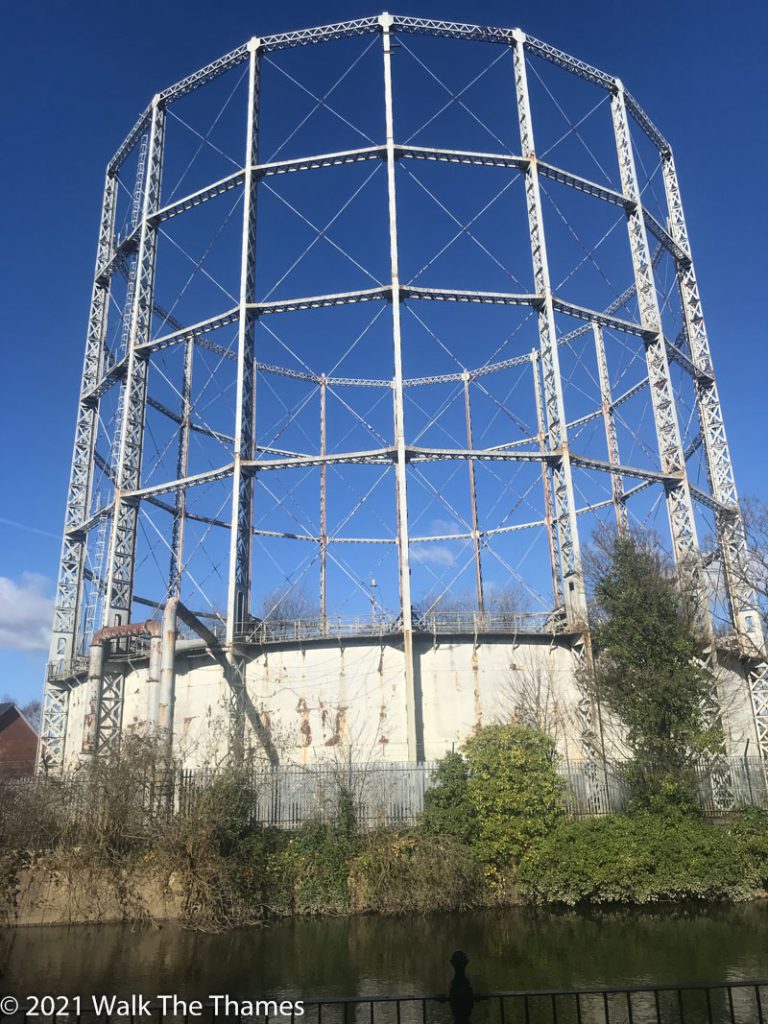
The Museum of London Docklands, part of the Museum of London, has a new exhibition entitled London: Port City, exploring how the port shaped the city, its people, places and language. The exhibition is free and runs until May 2022. The museum can be found close to Canary Wharf on the left bank of the Thames.
Goring Gap Wildlife are hosting a series of owl photography workshops throughout November and December. The workshops are held in a private garden near Didcot, Oxfordshire and feature Barn, Tawny, Long-Earred and Little Owls.
As reported previously:
London Rivers Week runs from October 23 to 31. Guided walks, talks, practical participation events and online seminars are underpinned by three main themes: access to nature, health and wellbeing, and climate resilience.
Hampton Court Palace is providing halloween-themed tours to co-incide with half-term (October 23-31). The Palace, built by Cardinal Wolsey but usurped by Henry VIII, is said to be haunted by some of his wives, in particular his fifth wife,Catherine Howard, who was executed for infidelity
Oakley Court Hotel is hosting a Film and Memorabilia Fair on October 31. The hotel is found next to Bray Studios on the Thames and was host to many horror films.
Marble Hill will host an online talk by London Luminaries on November 11 at 7.30pm.
For a list of scheduled events and festivals, see our events page.
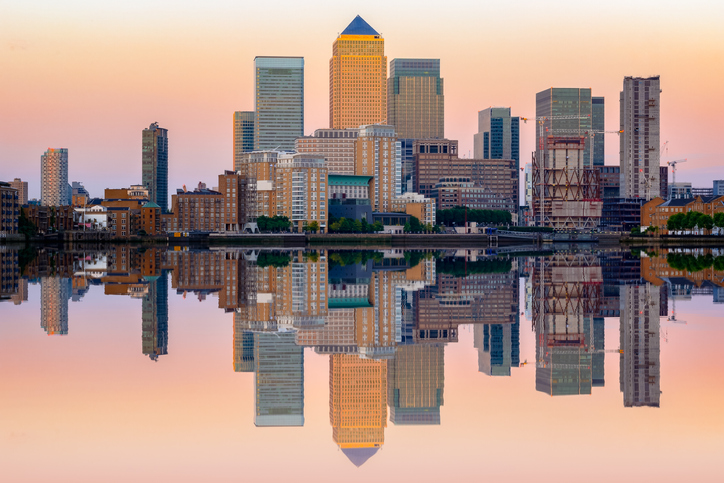
Website News:
We are currently planning a range of enhancements to our Route Planner to take place before the end of the year. If you have any suggestions do email us.
We will be updating the content of the journey planner over the next few weeks which will include new hotels that we visited over the summer.
A Closer Look: Around Hampton
On Sunday we had a couple of hours of the afternoon left after our last bag drop at the White Hart, Hampton Wick and managed a short circular walk. There is a free car park on the right bank at Hurst Park (between Walton and Hampton Court) from where we picked up the Thames Path in a downstream direction. Immediately opposite is Tagg’s Island.
Named after local boat-builder Thomas Tagg, a hotel was built here in 1872 which was frequented by members of society including Edward VII. In the early 20th century, a music hall was added. The complex closed in 1940 and was subsequently destroyed. The island is now owned by the residents.
There are no houses on Tagg’s Island, Instead a series of houseboats surround the perimeter of the island, the houseboat owners leasing the mooring rights from the residents association. Tagg’s Island is connected to Hampton Court Road on the left bank by a bridge.
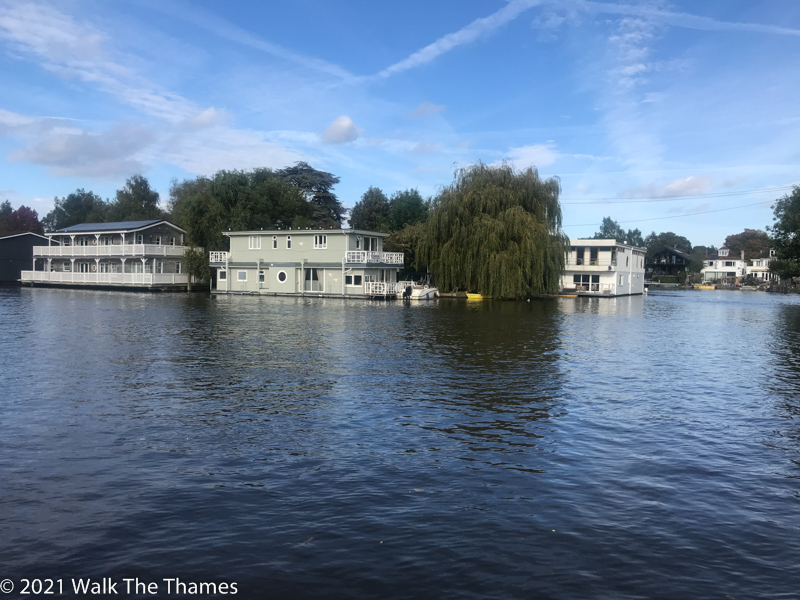
At Molesey Lock a strange sight appeared: someone in a wet suit climbing out of the lock. It turned out he had a hydrofoil and, effortlessly, sped upstream, weaving graceful curves along the river. Quite what the wildlife must think we do not know – but then there are all sorts of pleasure craft on the river, so what difference would one hydrofoil make?
Hampton Court Bridge soon comes into view with the majestic Mitre Hotel keeping watch.
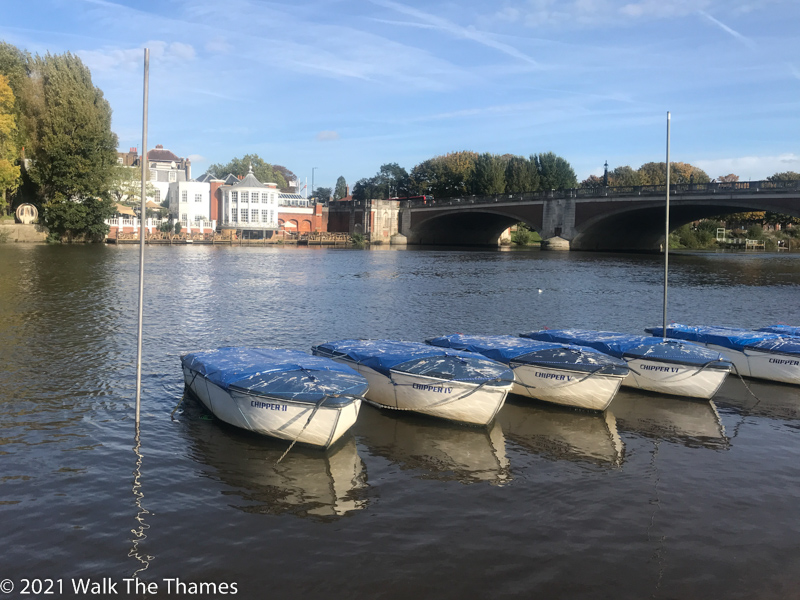
The Mitre Hotel owes its name, of course, to Cardinal Wolsey who built Hampton Court Palace. The bridge is the fourth iteration and consists of three wide arches and deceptively built of re-inforced concrete. The brick and stone facings make it look older than it actually is – having opened as recently as 1933. The architect was Sir Edward Lutyens who also designed the India Gate in New Delhi as well as the urns at Runnymede. The first bridge here was wooden constructed in 1753.
The Thames Path crosses the bridge to the left bank where it passes the side of the Palace on its way to Kingston . Although the Palace can be seen from the bridge, you must walk a couple of minutes past the bridge to see it in its glory through the front entrance.
Rather than continuing along the Path to Kingston we carried on past the Palace and across the road into Bushy Park. This is the second largest of London’s Royal Parks and is home to a large number of deer, a reminder that this was once Henry VIII’s hunting ground. Although we were heading west, you can walk eastwards through the park to Hampton Wick where, if you cross the bridge, you will be reunited with the Thames Path. Don’t tell anyone but it’s shorter too! See our detours for more information.
We walked along an avenue of lime trees, also known as Linden. The sounds of high pitched bird squawks reminded us that London is home to 30,000 ring-necked parakeets, also known as Kingston parakeets. As parakeets are non-migratory, they must have bred from a pair of escaped birds.

We exited the park close to the village of Hampton. Almost immediately we found ourselves at Garrick’s Temple. The temple was built in 1756 by actor David Garrick as a tribute to Shakespeare. Inside is a small museum of the life of Garrick. The museum is not open every day but, even if you find it closed, its well worth stepping down from the road to see the temple from the outside.
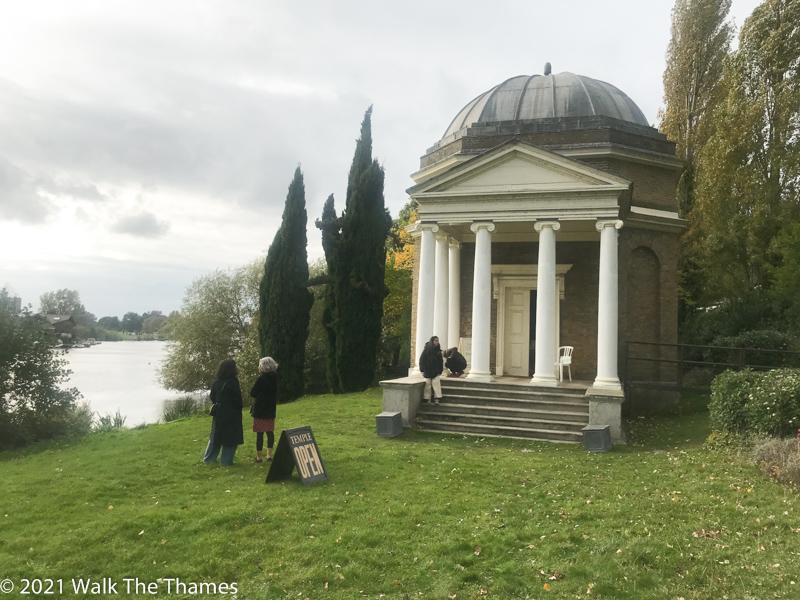
From Hampton it’s possible to take a short ferry back across to Hurst Park. The ferry runs continuously and takes but five minutes. The fare is £2. Note that it’s a seasonal ferry, closing at the end of October.
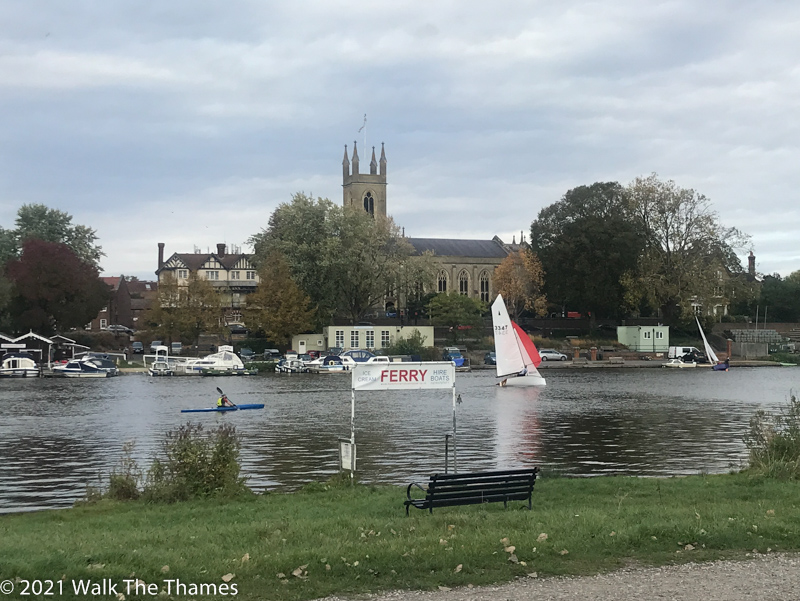
And finally…
Here’s a clip to a short video which many might appreciate. Your day packs have just become slightly heavier!
That’s all folks. See you on the trail!
Ready to book?
| Cookie | Duration | Description |
|---|---|---|
| cookielawinfo-checkbox-analytics | 11 months | This cookie is set by GDPR Cookie Consent plugin. The cookie is used to store the user consent for the cookies in the category "Analytics". |
| cookielawinfo-checkbox-functional | 11 months | The cookie is set by GDPR cookie consent to record the user consent for the cookies in the category "Functional". |
| cookielawinfo-checkbox-necessary | 11 months | This cookie is set by GDPR Cookie Consent plugin. The cookies is used to store the user consent for the cookies in the category "Necessary". |
| cookielawinfo-checkbox-others | 11 months | This cookie is set by GDPR Cookie Consent plugin. The cookie is used to store the user consent for the cookies in the category "Other. |
| cookielawinfo-checkbox-performance | 11 months | This cookie is set by GDPR Cookie Consent plugin. The cookie is used to store the user consent for the cookies in the category "Performance". |
| viewed_cookie_policy | 11 months | The cookie is set by the GDPR Cookie Consent plugin and is used to store whether or not user has consented to the use of cookies. It does not store any personal data. |